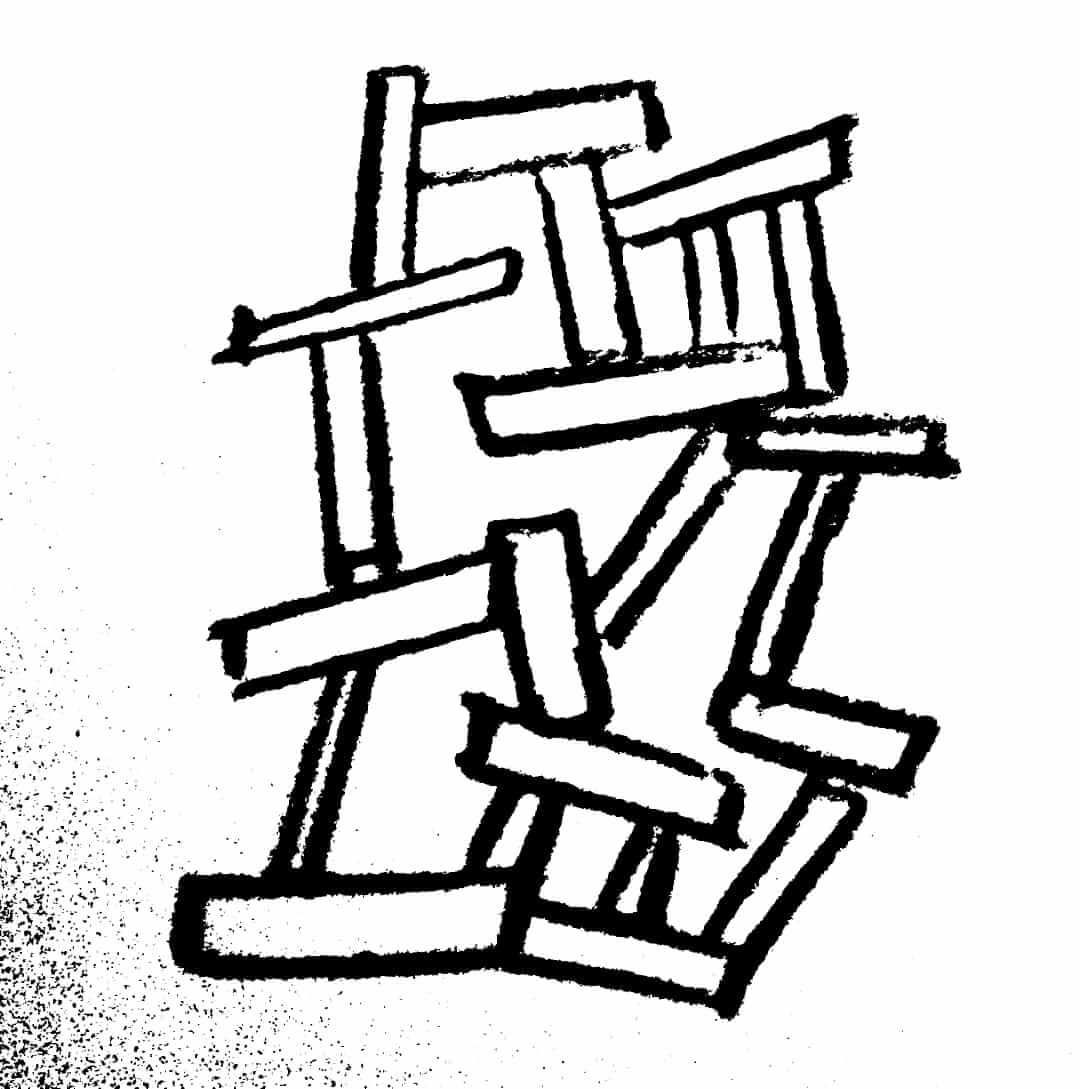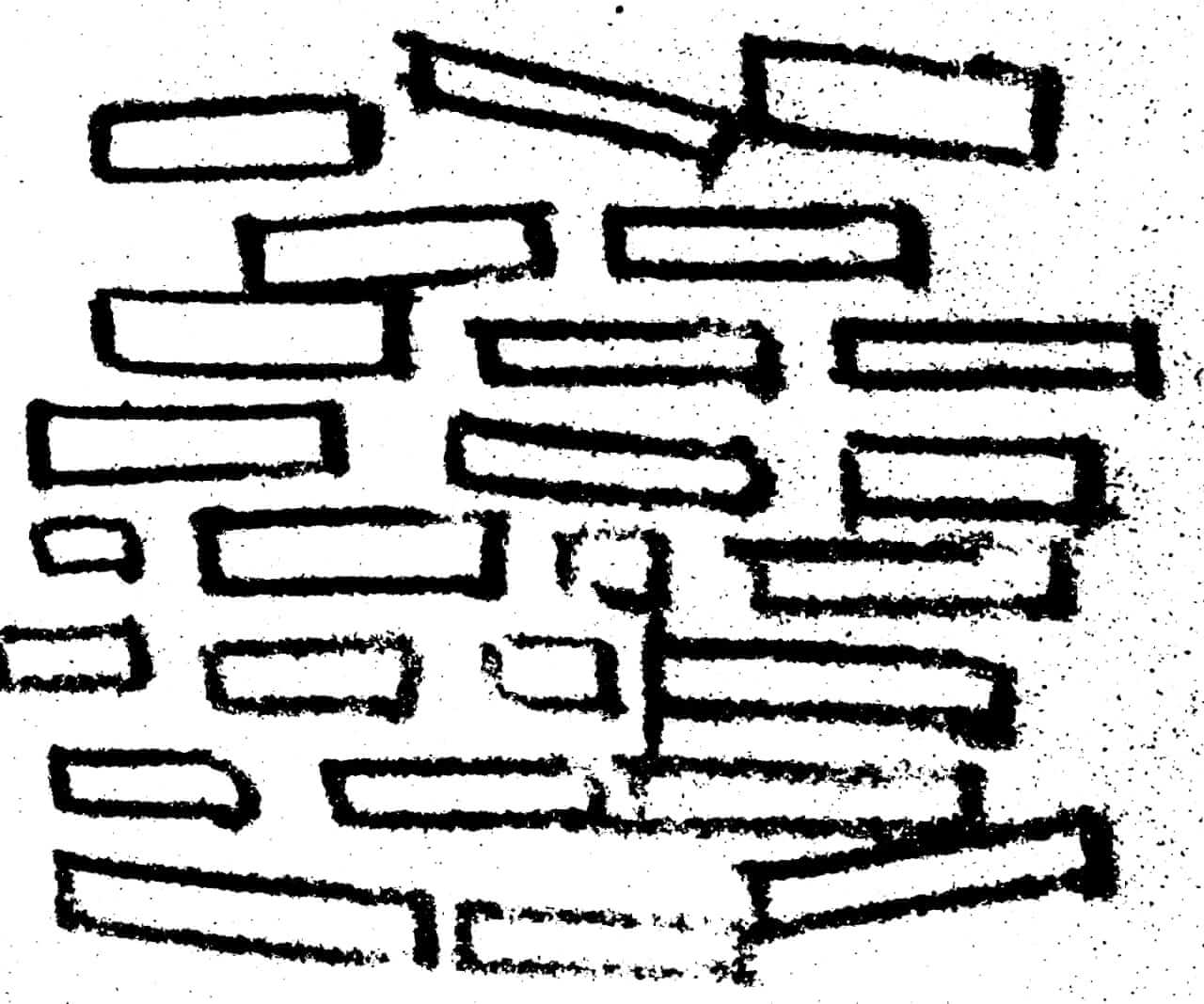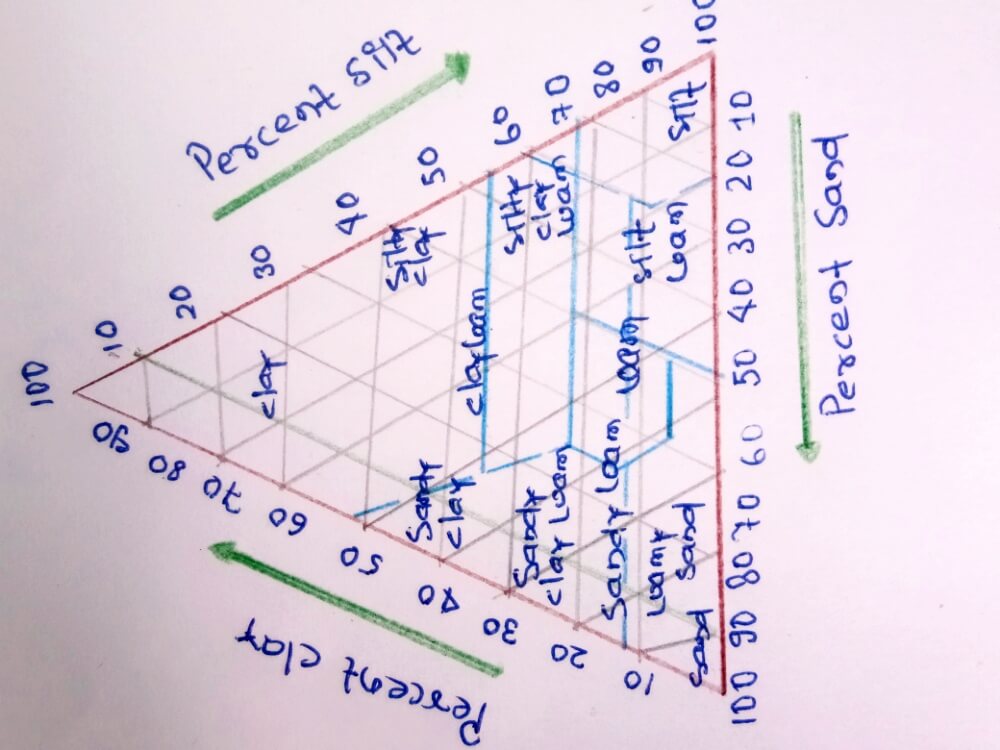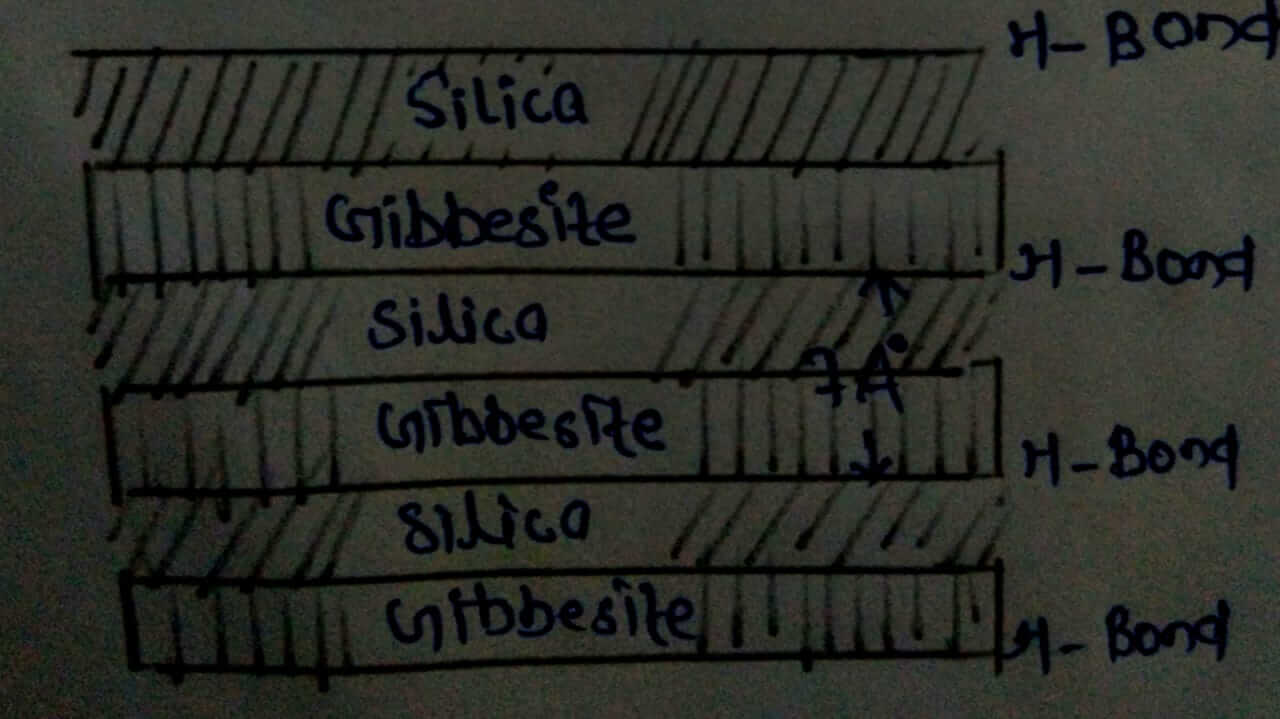Soil structure definition, types, grade & clay mineralogy | Soil structure | Soil structure definition & It’s type and grade of structure | Soil texture & its definition and type | clay mineralogy and its clay minerals soil.
Soil structure
Soil structure is a broad term of soil particles used to describe physical characteristics of the soil, in profile descriptions and to differentiate horizons of the aggregation of mineral grained into secondary units and important factor to influenced the soil properties like as shear strength of soil, permeability and compressibility etc, it is broadly described about the soil mechanical elements clay, silt, sand and also the aggregates or structural elements.
Soil structure is discussed about the mineralogical composition of soil such as Illite mineral, kaolinite mineral, montmorillonite clay minerals which is composite soil of structure mineral, its electrical properties, orientation of soil particles that is affected the it’s inner molecules particles with the consist of properties van der Wall force, valence force,dipole polarization, induction and dispersion effect, shape, nature and properties of soil water and also it’s ionic composition which is interactive by the primary valence, hydrogen bond and secondary valence.
Soil structure definition
Soil structure is defined as the arrangement or state of interactive of soil particles and aggregation of soil particles in a soil mass which is characterized by size, shape and degree of distinctness form a result of pedogenic process and play a important factor to influences the soil properties like as it’s water and air movement, shear strength, permeability, biological activity, plants root growth, compressibility, consolidation and seepage analysis of soil etc.
What is soil structure?
Regarding this, “what soil structure?”, soil structure is brief description of individual particles of sand, clay, silt and larger particles aggregate that is discussed it’s arrangement, interactive of soil particles, aggregation and it’s affective factor such as dipole, polarization, electrical properties, induction effect etc and mostly described in terms of grade, class and type of aggregate which are most commonly used to predict better the quality of soil properties for construction of fish ponds .
Soil structure is reflect natural pedogenic process such as weathering or disturbance which is also influence porosity and pore connection by aeration, water storage, root penetrations and the soil water movement such as infiltration & permeability.
Grade of soil structure
Grade of soil structure is a important term of soil structure in soil mechanics which is defined as the term of degree of aggregation that means single particles such as clay, silt, sand are assembled apear as larger particles are aggregates. These are briefly described by the differential between cohesion within aggregate and adhesion within aggregates.
Grade of soil structure reted accordance to moisture content of the soil, these are rated in four major grade of soil structure respectively which is massive structure consist the internal soil horizen appears concrete in one great mass, weak structure consist the poorly formed and it’s soil profile break down into a mixture of few entire aggregates, moderate structure which is well formed from distinct aggregate and strong structure that is well formed ,durable and it’s soil profile consists very largely of entire aggregates.
Soil structure types
Soil structure types:- according to consists properties of arrangement, interactive activities and aggregation there are four types of soil structure which are characterized by size, shape and degree of distinctness, these are as following-:
1. Single grained structure
2. Honeycomb structure
3. Flocullated and dispersed structure
4. Course grained skeleton and matrix structure
Single grained structure
Single grained structure is a coarse grained soil depositions which is consist diameter greater than 0.02 mm basically includes gravel, sand, silt and settle out of suspension in water, in this grained structure consist the deposition is gravitational force and surface forces are too small to produce any effect so it’s particles settle independent of each other. In this structures gravitational force play predominant role to comparatively surface electric force is insignificant.

Single grained structure consists the particle to particle contact on deposition in loose state due to reasons these are gain a high void ratio and in case of densest state having a low void ratio.
What is honeycomb soil?
Regarding this, “what is honeycomb soil?”, honeycomb soil structure is described with silt particles or rock flour which size is smaller than 0.02 mm diameter and greater than 0.0002 mm diameter, also known as fine grained particles. In this structure, the gravitational force and surface forces play a significant role when silt particles settle out of suspension.

In this structures, silt particles will be attracted by neighbouring particles that is already deposited when this particles approach the lower resion of suspension, due to reasons these particles formed in arches type and this combination of arches particles leads to the honeycomb structure.
If the honeycomb structure is unbroken, load carrying capacity is comparatively high along with high permeability but once the structures I’d broken then it’s load carrying capacity and permeability reduces, these are also affect by under vibration and shocks the structure collapse and large deformation takes place.
Flocullated and dispersed structure
Flocullated and dispersed structures are associated with clay, consisting of very fine particles or colloids which particles size is less than 0.0002 mm and expressed the it’s arrangement of particles are unstable card house structure and flaky in nature that is carried electric charges which are positive at the head and negative at the centre.
Flocullated structure and dispersed structures are arranged will be edge to edge and edge to face and also will be face to face contact between particles, in this structure surface electric force plays predominant role and gravitational force is insignificant. This structures are depending upon the nature of net resultant force.
Flocullated structure
Flocullated structures are aligned in edge to edge and edge to face orientation between particles,due to fact that the net force during the deposition are attractive, it leads to the formation of follucant structure.
Flocullated structure, tendency of formation increase within the increase in concentration of minerals in water during deposition, these structure are having high strength, high permeability and low compressibility when unbroken structure is found.

Dispersed structures
Dispersed structure arranged will have face to face contact or less parallel array between particles and net electrical forces between adjacent soil particles at the time of deposition are repulsion, these structures are poses Lowe strength. these are shown below
Coarse grained skeletons structure
Coarse grained skeletons structure associated with the composite soils in which coarse grained fraction is greater in proportion compared to fine grained fraction, in this structures coarse grained particles to particle contact with formed skeletons and this structure occupied the void by the fine grained soil.
Cohesive matrix structure
Cohesive matrix structure associated with composite soil in which the fine grained fraction is more than coarse grained fraction and coarse grained particles will be embedded in fine grained fraction, this structure is more compressible compared to the more stable course grained skeleton structure.
◆You Can Follow me on Facebook and
Subscribe our Youtube Channel
Soil texture
Soil texture is the fineness or coarseness of a soil that is briefly described about the proportion, it’s property of three sizes of soil particles sand,silt and clay which is consist of properties such as shrinkage, swelling properties, it’s composition and interactive forces which is decided the coherent and noncoherent properties.
Soil textures are mainly described about the sand,silt and clay particles in which respectively consist the large particles, medium sized particles and small particles.
Soil texture definition
Soil texture is defined as the described physical characteristics of the soil, in soil profile descriptions and to differentiate horizons in size of primary particles which is consist of mineral soil includes with relative proportion of sand, silt, clay and organic soil associated with the degree of composition.
What is soil texture?
Regarding this, “what is soil texture?”, soil texture is fine grained or coarse grained of a soil which includes particles gain the water holding capacity the ability of soil, permeability activities in soil and grow root for crops and also retained water for use of plants that is briefly discussed about the relative sizes of sand, silt and clay particles.
Sand particles size consist of greater than 0.02 mm diameter, silt particles size consist of lower than 0.02 mm diameter and greater than 0.0002 mm diameter and clay particles is less than the 0.0002 mm diameter.
Soil texture depends upon the percentage of clay, silt and sand in presence of soil having varies according to the mountain environment where they are formed, property of soil textures are depend upon the response of the soil to environmental having loamy and silly in valley sides and coarse grained in the upper slopes.
Soil texture triangle
Soil textures triangles are structure of 12 basic textural classes which is represented the proportion and percentage accordance to size of particles sand, silt and clay. also classified by the United States Department of Agriculture In the United States of twelve major soil texture that are following Soil textural class and Soil textural groups-
1. Sand – Coarse to very course
2. Loamy sand – Coarse to very course
3. Sandy loam – Moderately course
4. Loam – Medium
5. Siltt loam – Medium
6. Silt – Medium
7. Sandy clay loam – Moderately fine
8. Clay loam -Moderately fine
9. Silty clay loam -Moderately fine
10. Sandy clay – Moderately fine
11. Silty clay – Moderately fine
12. Clay – Moderately fine

Which soil has lowest water holding capacity?
Regarding this, “which soil has lowest water holding capacity?”, in this classification of soil textures coarse soils group having particles sand, loamy sand and sandy loam have the property of lowest water holding capacity.
Which soil has highest water holding capacity?
Regarding this, “which soil has highest water holding capacity?”, in this classification of soil textures in Unites States of Agricultural medium textured soils group having class soil textures silt loam, fine Sandy loam and silty clay loam have the highest water holding capacity.
Soil texture loam
Loam texture soil is the type of soil that is combination of sand, clay and silt which is improve perfect balance of soil particles due to having properties of ability to restain moisture content and nutrients, this type of soil gain all properties of equilibrium of three types of soil Sandy, silt and clay due to fact that loam soil is more suitable for farming and also referred to as agricultural soil, these soils are fertile and provide good drainage.
Soil texture of clay
Clay texture is a heavy soil type that composed of the smallest particles of soil having property of hold a high amount of water that is cold in winter and dry out in summer, give benifits from high nutrients.this type of soil densely closed with very little or no airspace, in fact that this soil is not suitable for growing of plant.
Soil texture determination
Soil texture is determined by the field and laboratory to determine physical texture of particles that are less than two millimeters in diameter which include clay, silt and sand, that soil taxures are measurement by using qualitative method, quantitative method and hydrometer for use of agricultural sector to determining crop suitability and environmental.
Soil texture determination may be tested in the lab which is determined the percentage of sand, silt and clay, these structures are also determined the textural class of the soil by reffring to the textural triangle.
Mineralogy of clay
Meneralogy of clay means described about the mineralogical composition clay structures having Illite, kaolinite mineral and montmorillonite minerals structures with the help of two fundamental structure unit silica tetrahedral unit and octahedral unit.
1. Silica tetrahedral unit
2. Octahedral unit
Silica tetrahedral unit-: in the silica tetrahedral unit includes the four oxygen atoms enclosed silicon at the centre of the tetrahedral geometry such that all the oxygen at the base of tetrahedral lies in same common plane.
1. Net charge present over single silica tetrahedral unit is -4
2. Silica tetrahedral unit is symbolically represented by trapezoidal
3. Silica tetrahedral combine to form a sheets called silicate sheet or lamine.
Octahedral unit-: octahedral unit is includes with the aluminium,iron or magnesium atom is enclosed in hydroxyls having the configuration of an octahedral.
1. This unit is symbolised by gibbesite.
2. The octahedral units are put together into a sheet structure.
3. Two layers of density packed hydroxyls with cation between the sheet in octhedral coordination.
Clay mineralogy and soil structure
Clay mineralogy and soil structure is a soil structure having clay minerals particles which is formed with the two fundamental unit of soil structure unit silica tetrahedral unit and octahedral unit that resulting 15 types of clay minerals formed, here we discussed about three main clay mineralogy and soil structure that is kaolinite, montmorillonite and Illite mineralogy of clay.
Main mineral of clay are following as-:
1. Kaolinite
2. Montmorillonite
3. Illite
What is kaolinite clay?
Regarding this, “what is kaolinite clay?”, kaolinite clay mineral includes the basic structural unit of Al sheet combined with silica sheet which is more stable structure due to the formation of hydrogen bond between the oxygen of silica sheet and gibbesite sheet.

1. Kaolinite clay minerals consist of total thickness is 7 angstroms
2. In kaolinite clay minerals, Hydrogen bond developed between the oxygen of silica sheet and hydroxyl of aluminium sheet
3. This mineral is stable due to gain of strong bond
4. Most common example of kaolinite clay mineral is china clay
What is Montmorillonite?
Montmorillonite-: 1. Montmorillonite incl udes the basic structural unit of alumina sheet sandwitched between two silica sheet.
2. Montmorillonite consist of thickness of each structural unit is 10 angstroms
3.The gibbesite layer in montmorillonite may include atoms of iron, magnesium , aluminium or a combination of these.
4. Soils containing montmorillonite minerals are high shrinkage and high swelling characteristics.

What is Illite mineral?
Illite mineral-:1. Illite mineral is similar to that of montmorillonite except that replacement of silicones by aluminium in the tetrahedral layers and potassium are between the layer serving to balance the charge.

2. The cation bond of Illite is Weaker than the hydrogen bond of kaolinite.
3. It’s bond is stronger than the montmorillonite.
4. Illite mineral consist thickness is 50 to 500 angstroms
5. This is not swelling characteristics due to movement of water between the sheet.